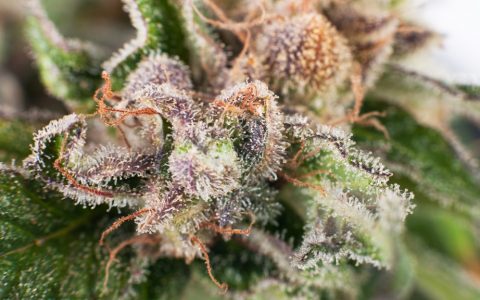The terpene pinene gets most of the credit for giving certain cannabis strains a pungent evergreen and minty aroma. After all, pinene is one of the most prevalent terpenes found in cannabis, as well as one of the most heavily researched.
However, there is a less common terpene that also brings similar pine flavors to the equation. This is the terpene guaiol—pronounced “g-why-ee-ol”—which has a host of therapeutic benefits, and also shows up in a few well-known strains, albeit in small amounts, on the market today.
Guaiol’s Unique Profile
Guaiol, sometimes referred to as “champacol,” differs from many other terpenes—which are oil-based—because of its unique structure as a liquid. Guaiol is most prominent in the hard, oily timber of the tropical guaiacum plant, an evergreen variety mostly found in the Caribbean as well as other subtropical regions. Coniferous trees such as Cypress pines contain wood that is also known to carry guaiol.
Aside from its prominent pine-like aromas, wood and rose notes are also present in its terpene profile. With a lower than average boiling point for terpenes (92°C, or ~198°F), guaiol needs to be vaporized at low temperatures to be fully enjoyed.
Cannabis Strains Containing Guaiol
Even though it’s not a primary terpene, guaiol can be found in some notable strains, especially ones that display pungent pine-like aromatic profiles.
High concentrations of guaiol are found in:
The Medical Benefits of Guaiol
Modern research on guaiol is very limited, though we do know that the guaiacum plant, from which the compound is mainly derived, has been used extensively in natural medicine for quite some time.
It was brought back from Hispaniola to Europe in the 16th century by the Spanish after they finished their conquest of San Domingo. By the late 1700s, guaiacum gum extracted from the dense wood of the plant was being used in the treatment of syphilis and to regulate menstruation.
Guaiol is commonly known as an anti-inflammatory, as this in vitro (in a test tube) and in vivo (in a living organism) study from 2010 shows.
A 2016 study shows that when used in conjunction with other essential oils, guaiol can have anti-parasitic properties in vitro, while a separate but similar study shows its antioxidant properties, also in vitro.
In mice, guaiol can potentially reduce tumors and strengthen the effects of chemotherapy in vivo and in vitro, as show in this study. Although not therapeutically beneficial, it has also been shown that similar to other terpenes such as terpinolene, guaiol can also be used as an insect repellant.
There is still quite a bit of research needed to fully understand the effects of guaiol, especially when consumed in cannabis.















